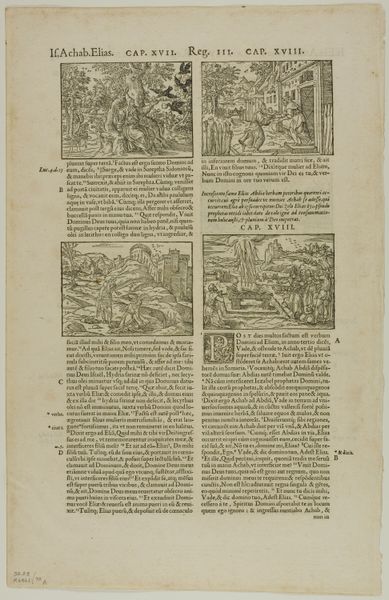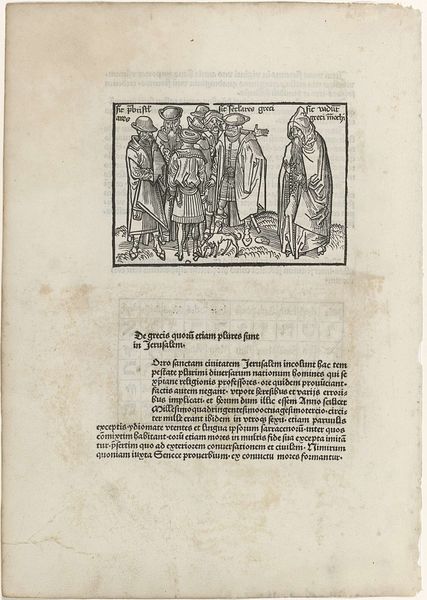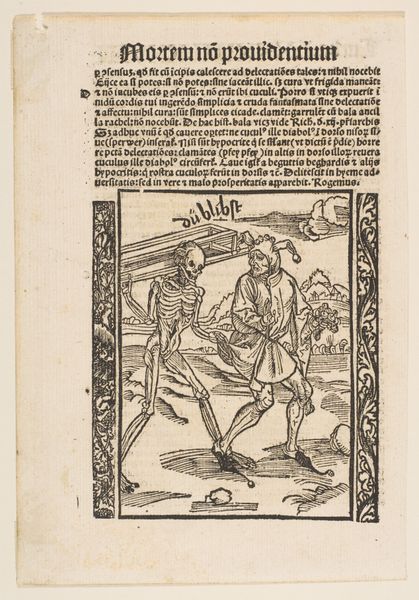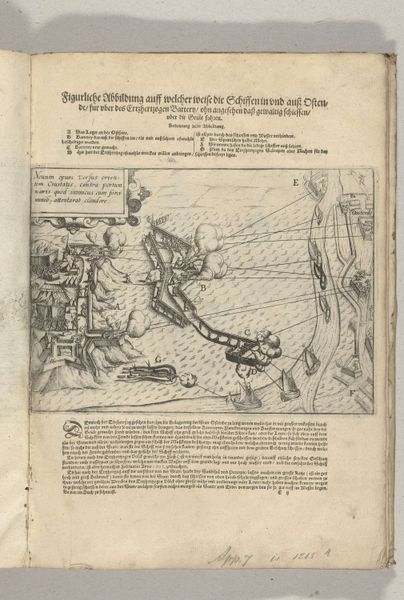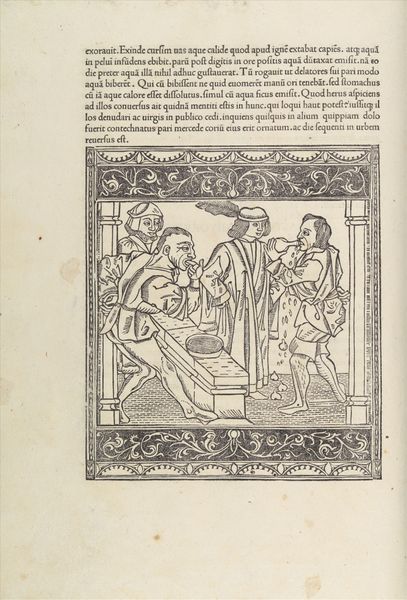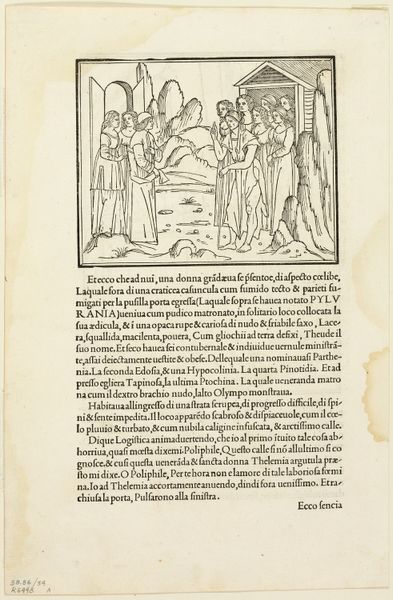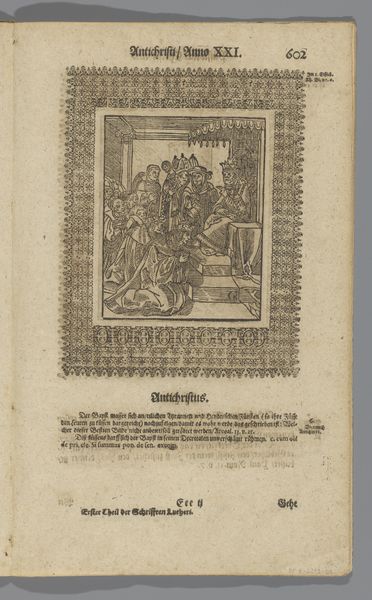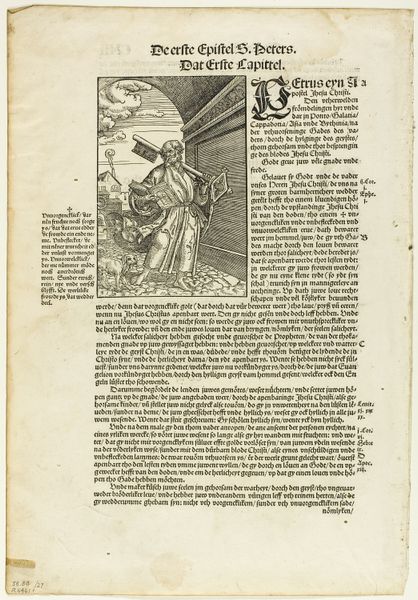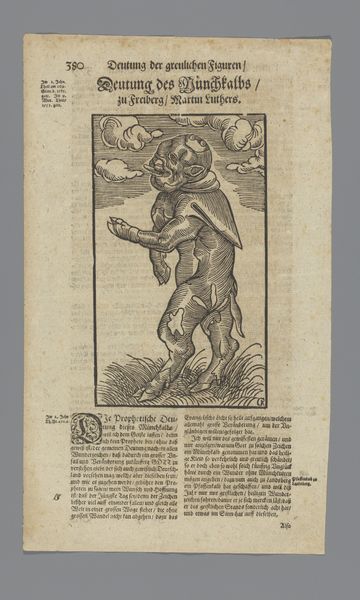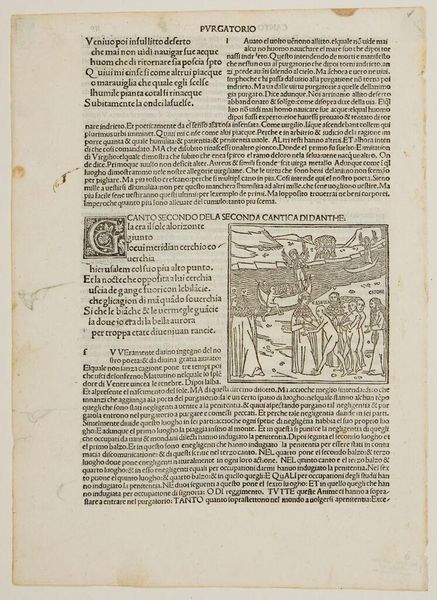
Dance of Death, leaf from The Nuremberg Chronicle 1493
0:00
0:00
drawing, print, woodcut
#
drawing
#
medieval
#
narrative-art
# print
#
figuration
#
woodcut
#
history-painting
#
northern-renaissance
Dimensions: Sheet: 18 1/8 × 12 1/2 in. (46 × 31.7 cm)
Copyright: Public Domain
Curator: Look at this fascinating leaf from The Nuremberg Chronicle, a "Dance of Death" created in 1493 by Michael Wolgemut. It's a woodcut, isn't it striking? Editor: Strikimg is one word for it; macabre is another! The contrast of light and shadow creates such a strong sense of dread. The way these skeletal figures are composed—some dancing, some mourning—it’s really unsettling. Curator: Well, these kinds of images were popular at the time and deeply embedded in social and religious consciousness. We need to remember that it would have been reproduced on a relatively large scale for that time, influencing many different audiences and classes. Its appearance in the Nuremberg Chronicle indicates its purpose wasn't just aesthetic, it was didactic, aimed to remind readers about their morality and eventual death, acting almost like a medieval meme! Editor: And how much do you think the method influenced the aesthetic? With woodcut as a medium, Wolgemut had to be decisive. The cuts are so clean, the lines defining. The labor involved is substantial; carving the wood to create the forms emphasizes how death transforms flesh back into basic, graphic lines and shapes. Curator: Absolutely. This wasn't just the work of the named artist though, but a product of a workshop, where labour was divided, tasks assigned, creating what we may define as "art" by way of industrial, early publishing practices. We also see the Northern Renaissance’s impact, shifting towards linear perspective, even if still somewhat crude, moving from symbolism toward more observational rendering of space and form. This, in addition to how this kind of visual material shaped historical understanding within Nuremberg society. Editor: True, the interplay between the means of production, from individual artists, their workshops and this Chronicle, with a social fear about mortality. I do wonder, though, if contemporary audiences understood art within its socioeconomic frameworks the way we do now. Did they register that shift, or were they more influenced by, let's say, the Church and morality? Curator: Hard to say with certainty! Though understanding that they may not have held these concepts separately is vital for an understanding of our art history, even after several centuries of research! Editor: Agreed! An uneasy reminder of mortality framed by artistic process and its cultural moment! Curator: Indeed! Thank you!
Comments
No comments
Be the first to comment and join the conversation on the ultimate creative platform.
